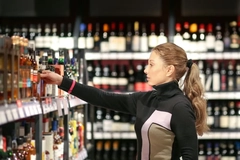
- Industry news
Industry news
- Category news
- Reports
- Key trends
- Multimedia
Multimedia
- Journal
- Events
- Suppliers
Suppliers
- Home
- Industry news
Industry news
- Category news
- Reports
- Key trends
- Multimedia
Multimedia
- Events
- Suppliers
Suppliers
EPPA policy officer discusses PPWR challenges, future legislative reform and infrastructure expansion

The European Paper Packaging Alliance (EPPA) is supporting the EU’s Packaging and Packaging Waste Regulation (PPWR) after previously identifying targets as “unrealistically high.”
As the adoption deadline for the PPWR by the end of this year approaches, we discuss the merit of the legislation with the EPPA with members including Huhtamaki, CEE Packaging Solutions, McDonald’s, Burgo, the MM Group and Seda.
“We are happy with the results of the PPWR, which recognizes the need for safe packaging while reducing the use of non-renewable sources and boosting recycling,” Alice Petrucci, EPPA policy and communications officer, tells Packaging Insights.
Previously, the EPPA had questioned the PPWR’s emphasis on reusable packaging, arguing that single-use paper packaging is also an environmentally friendly option better suited to tackling issues related to the environment, consumers, food safety and European businesses.
The European Parliament (EP) and the European Council (the Council) agreed on the PPWR’s content in March, coming into force in 2025. Petrucci comments: “The regulation currently has no scope of being further modified, and we have been supporting a swift adoption to ensure legal stability for our members.”
Industry reaction
Last week, the environmental NGO Zero Waste Europe told us that while the PPWR “goes in the right direction” with its plastic recycling targets, more could have been done to ensure higher recycling rates for paper and cartons.
Petrucci responds: “As an industry we are continuing to look at improving the design of our products to be more effectively recycled and strive to reduce and eliminate barrier coatings.”
 Alice Petrucci, EPPA policy and communications officer (Image credit: EPPA).“We are striving to adapt and innovate, in order to make our products fit for the new requirements for the PPWR.”
Alice Petrucci, EPPA policy and communications officer (Image credit: EPPA).“We are striving to adapt and innovate, in order to make our products fit for the new requirements for the PPWR.”
She adds that the paper packaging industry “collaborates with scientists across Europe, engaging in studies to compare alternatives, ensuring that we remain at the forefront of environmental responsibility.”
As the EU institutions were collaborating on the PPWR, the EEPA commissioned several studies looking at paper recycling in the union.
One such study was conducted by the Danish Environmental consultancy, Ramboll and looked at food takeaway packaging impact. It found that, compared to other common alternatives, single-use paper-based packaging generates 2.8 times less CO2 emissions and uses 3.4 times less fresh water in quick-service restaurants for in-store consumption.
Another study supported by the EPPA considered the importance of food safety, presenting evidence that the PPWR does not adequately consider this aspect of food packaging. Conducted by Ulster University, Ireland, the study found that multiple-use packaging increases the risks of cross-contamination.
Secondary legislation
As the PPWR content is now set in stone, Petrucci highlights the importance of secondary legislation, which will further define the EU packaging recycling criteria. Currently, exemptions are foreseen for materials such as cork, textile, rubber and ceramics.
“The real impacts will strongly depend on secondary legislation, including, for instance, the Design for Recycling Guidelines and harmonization of labeling and Extended Producer Responsibility fees,” she details.
 Raising consumer awareness of sorting and recycling will be vital to PPWR implementation.“We need to ensure that the secondary legislation and implementing acts fulfill the wishes and mandate of the agreements reached in the Trialogues between the European Commission (EC), the Council and EP.”
Raising consumer awareness of sorting and recycling will be vital to PPWR implementation.“We need to ensure that the secondary legislation and implementing acts fulfill the wishes and mandate of the agreements reached in the Trialogues between the European Commission (EC), the Council and EP.”
“We need to be mindful that, as a study by the EC’s Joint Research Centre confirms, fiber-based packaging has the best environmental outcome, including for water consumption.”
Petrucci highlights the importance of consumer awareness for the proper implementation of the PPWR, particularly in terms of sorting and recycling.
“Proper infrastructure at the national level is required, but it all starts at consumers’ homes. Clear labeling and sorting instructions are pivotal to make sure that the consumer is informed on how to sort their waste,” she adds.











